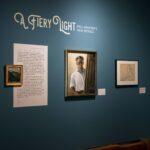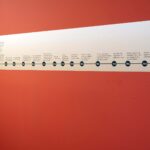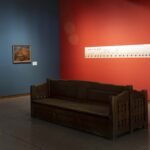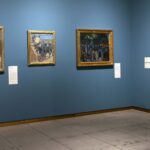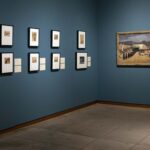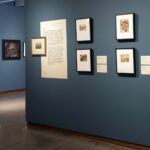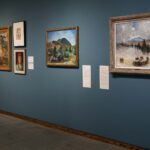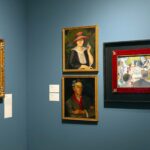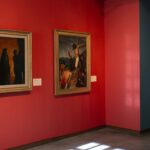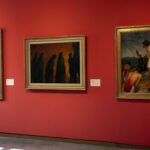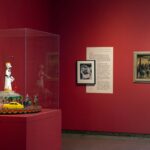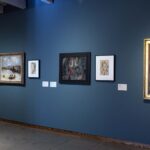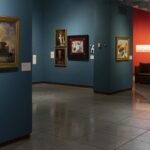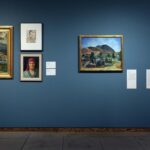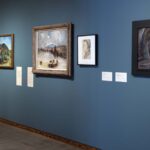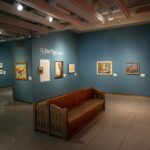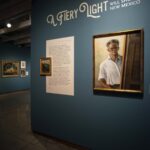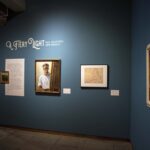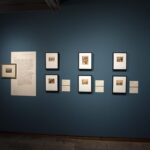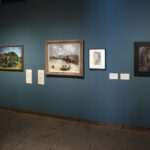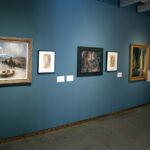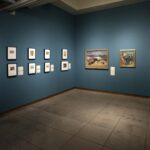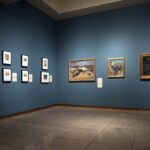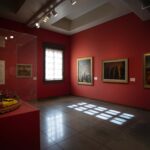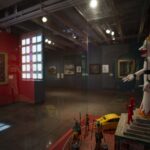A Fiery Light: Will Shuster's New Mexico
In 1920 serious health issues brought William Shuster to New Mexico, kicking off 49 years of creativity, exploration, and engagement. Almost immediately he integrated himself into Santa Fe’s burgeoning bohemian art scene, and made a reputation for himself as eccentric and passionate member of the community with an unsurpassed lust for life. Shuster embraced the unique beauty of New Mexico from Carlsbad Caverns, to Canyoncito and the Badlands. The artwork he left behind illustrates the rich culture of the state that gave him a new lease on life.
This exhibition celebrates the centennial anniversary of Shuster’s arrival in the Southwest. It highlights the artistic legacy he developed here in Santa Fe and elsewhere throughout the state and forefronts the significant artistic relationships he forged here. In addition to exhibiting the artwork that Shuster produced in New Mexico, it will look at his time as a member of Los Cinco Pintors, an early group of young Santa Fe painters devoted to “taking art to the people.” The show explores his relationship with prominent American realist painter John Sloan and his collaboration with Gustave Baumann to conceive of the now iconic Santa Fe boogeyman, Zozobra.
Will Schuster Timeline:
| Year | Event |
| 1893 | William Howard Shuster is born in Germantown, PA |
| 1910 | Enrolls in Drexel Institute of Technology, Philadelphia (his intent was to become an electrical engineer) |
| 1911 | Disenrolls and is employed by Curtis Publishing (Saturday Evening Post) to streamline operations and make them efficient |
| 1917 | Enlisted in US Infantry (World War I) |
| 1918 | Shuster marries Helen Hasenfus |
| 1919 | Shuster discharged from Army with pulmonary health issues from being gassed during the war; later identified as Tuberculosis |
| 1920 | February: Moved with Helen to Santa Fe to improve health in a drier climate (they were originally bound for Taos) |
| 1920 | Met and developed life-long friendship with painter John Sloan (who came to Santa Fe in 1919) |
| 1920 | May: son is born but died 6 days later |
| 1921 | July: son Don is born |
| 1921 | Los Cinco Pintores is formed to help promote a young group of Santa Fe artists: Will Shuster, Freemont Ellis, Willard Nash, Jozef Bakos and Walter Mruk (it more or less disbanded in 1926) |
| 1921 | First exhibition of Los Cinco Pintores art at the NM Museum of Art |
| 1922 | Created “Covered Wagon” to use as mobile home and art supplies transport when going on sketching expeditions from 1922-1928 |
| 1924 | Sloan and Shuster engage in a “portrait duel” – each creating a portrait of the other simultaneously |
| 1924 | Mruk and Shuster explore and sketch Carlsbad Caverns |
| 1924 | First Zozobra – a giant puppet now burned every year in effigy to rid the gloom of the passing year |
| 1925 | WPA also funds Shuster to paint murals for the Carlsbad Caverns |
| 1926 | Los Cinco Pintores formally disbands |
| 1929 | The Shusters begin to homestead a plot of land (off of what is now called Tano Road) |
| 1930 | The Poets’ Roundup was formed (Shuster was a member; group disbanded in 1939) |
| 1934 | Shuster is funded by the Works Progress Administration to paint frescos about Native American life for the NM Museum of Art |
| 1935 | Will and Helen divorce |
| 1937 | Shuster weds Selma Dingee Schaumannn (Sami) |
| 1939 | Son John Adam is born |
| 1942 | Son Stephen is born but dies 3 months later |
| 1950 | Shuster designed and created an award-winning float for the Pasadena Rose Bowl parade |
| 1951 | John Sloan dies shortly after his 80th birthday |
| 1952 | Shuster designed and created El Toro Diablo as a mascot for the Santa Fe Rodeo |
| 1953 | Shuster has a small stroke and heart attack |
| 1964 | Shuster hands off Zozobra over to Kiwanis Club of Santa Fe |
| 1969 | Feb: Shuster dies in the VA Hospital in Albuquerque, shortly after his 76th birthday |
